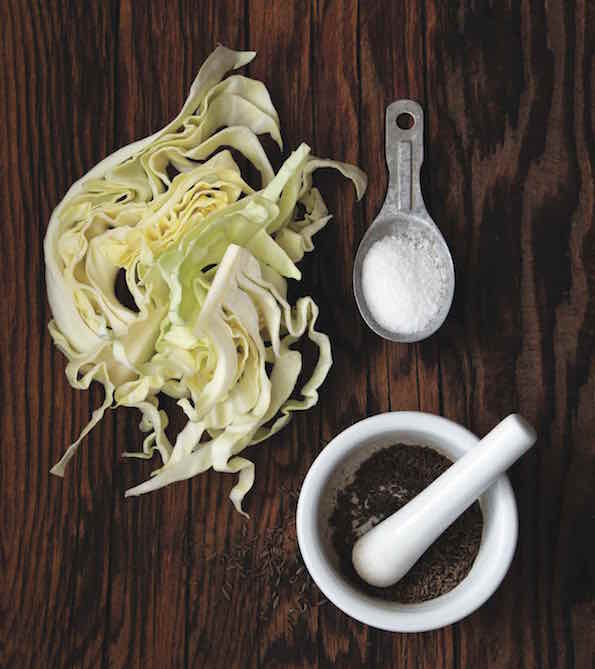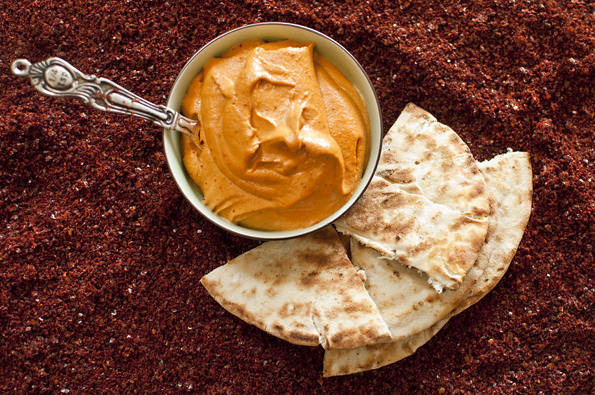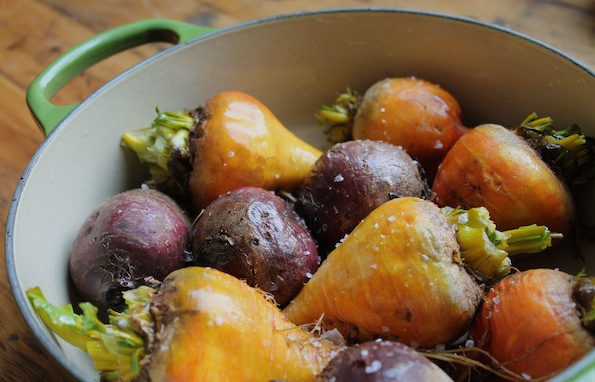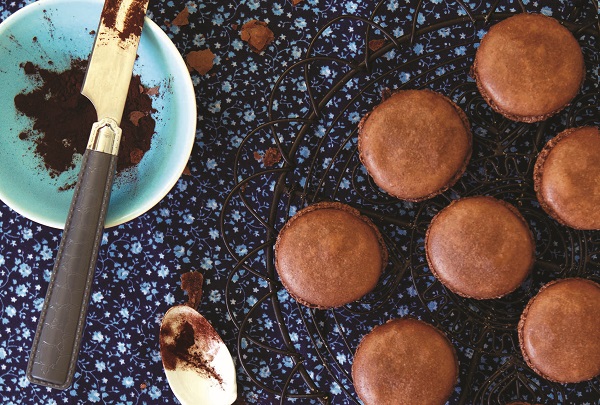Caraway Kraut
- Details
Our April Cookbook Club selection is Fresh & Fermented: 85 Delicious Ways to Make Fermented Carrots, Kraut, and Kimchi Part of Every Meal by Julie O’Brien and Richard Climenhage. Join us to taste and learn about the mysteries of kraut! Here’s a sneak peek at one of their recipes…

“We didn’t start making Caraway Kraut until our third year in business—we just weren’t sure if our customers would like the distinctive caraway flavor. When we started experimenting, however, it took just one test batch to convince us that Caraway Kraut belonged in Firefly’s lineup of fermented foods.
Caraway Kraut contributes its pleasing earthy taste to some of the recipes in this book and also makes a great side dish for grilled meats or mashed potatoes. It’s the perfect addition to the classic Reuben (of course) and adds intrigue to potato salads and coleslaws too. Whirl it with fresh avocado for a simple sandwich spread or as a dip for chips and veggies. (The acid does double duty—it adds flavor and keeps the avocado from getting brown.)
Caraway Kraut brine, which results from the fermentation process, is a delicious tonic on its own. For hundreds of years people have been drinking sauerkraut brine to heal ulcers or temper hangovers—it’s a well-known Russian remedy—and that inspired us to start bottling and selling the extra brine as our first Tummy Tonic.”
Ingredients
- 1 head green cabbage (about 2 pounds)
- 1 tablespoon sea salt
- 2 teaspoons caraway seeds
Instructions
- Peel off any older, discolored outer leaves from the cabbage, reserving the leaves, and rinse the head. Quarter and core the cabbage, reserving the core. Slice the cabbage into 1/8-1/4 inch-wide strips. You should have about 12 cups of shredded cabbage.
- Put the cabbage in a large bowl and sprinkle it with the salt. Use your hands to thoroughly work the salt into the cabbage. When the cabbage has shrunk to about half its original volume and has generated a briny, watery base, taste it and add more salt or water if necessary. Stir in the caraway seeds, making sure they’re evenly distributed throughout the ferment.
- Pack the cabbage tightly into a quart jar until it’s about 2 inches below the rim, weighing it down with the reserved leaves and core. Make sure the brine completely covers the compressed cabbage by about 1 inch, and that it’s about 1 inch below the rim of the jar. Let the jar sit at room temperature, roughly 64 to 70 degrees F, topping the cabbage with more brine if needed. The kraut could be ready to eat after 1 week (or let it ferment longer for a richer taste). Store it in the refrigerator for up to 6 months.
Notes
Make It Quick & Simple
Start with 2 cups of your own Classic Kraut, or 1 pound plain unpasteurized sauerkraut from your local market. (You’ll find it in the refrigerator case.)
Stir 1 to 1½ teaspoons of crushed caraway seeds into the kraut and mix well. Crush the caraway seeds using a mortar and pestle, rolling pin, or clean coffee grinder. Break them down, but don’t crush them to a powder. Crushing them helps the caraway flavor more fully permeate the kraut.
Pack the entire mixture into a jar, and top off with as much Brine as needed to cover the kraut.
Let the jar sit at room temperature out of bright light for about a week, and then refrigerate. It’s ready to eat; however, the longer you let it ferment, the more fully the flavors will develop.
*(c)2014 By Julie O’Brien and Richard Climenhage. All rights reserved. Excerpted from Fresh & Fermented: 85 Delicious Ways to Make Fermented Carrots, Kraut, and Kimchi Part of Every Meal by permission of Sasquatch Books. Photography by Charity Burggraaf.












Leave a Comment